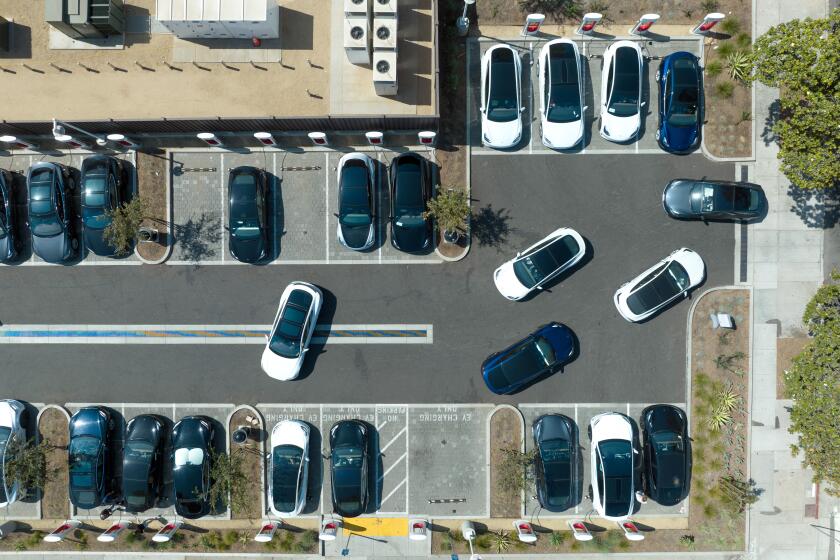My other car is a plane
THERE’S something peculiarly egregious, something antagonizing about the 2007 Mercedes-Benz GL, the company’s new full-size, 15-mpg sport-utility vehicle, which might be described as a Cadillac Escalade with a hankering for Czechoslovakia. For one thing, it goes to show that, even though the full-size SUV market has fallen off dramatically in the last year, there are still sufficient numbers of selfish rotters out there to constitute an appealing market segment.
Mercedes-Benz executives offer this wholly meritless defense: Many of its customers leave the brand because the company does not offer a full-size SUV that meets their needs, which is to say, a seven-passenger, 17-foot 4x4 with a 9,300-pound towing capacity. At this point in the presentation in Napa Valley last week, execs showed slides of the GL pulling a 30-foot boat. So there you have it: Mercedes’ audience of water-skiing polygamists is underserved.
Needs? Did the man say needs? OK, then. I propose needs testing for the purchase of such a vehicle. You must have a Chris-Craft and three or more school-age children in the yard to qualify. Your vehicle must do double-duty as, um, a bookmobile.
Need has very little to do with it. This segment is about want, naked and unquenchable, I-got-mine-you-get-bent appetite. It’s well established that the vast majority of these vehicles never touch gravel, never carry more than a couple of people, and never tow anything heavier than the weight of their owner’s childhood traumas.
Most people who buy the GL won’t know a Class IV hitch from a Mark 48 torpedo. And I, for one, am not going to congratulate some Bel-Air singleton for his wise vehicle purchase when it is so patently purblind and morally retrograde.
Plainly, I’m disappointed that Mercedes-Benz -- the company of Gullwings and 500Es, of elegant engineering and F1 cars -- has decided to get into delivery van business. And yet I cannot fairly blame the company, which being a corporation is doing what corporations do in the absence of governance: Make as much money as is within its ken to do.
The case for the GL was compelling: As one of three products to come out of the company’s newly enlarged Alabama factory -- the others are the redesigned M-class and the new R-class luxury van -- the GL’s development and production costs are shared. The powertrain, suspension, electronics and auxiliary systems are common with the M-class.
Purely as a piece of machinery, the GL is exemplary. With a unit-body chassis of high-strength steel, four-wheel independent air suspension with automatic damping, all-wheel drive, a powerful 4.6-liter V8 and seven-speed automatic transmission, and a full complement of safety and convenience features, the GL is a mighty, mellow dreadnaught, roomy, comfortable and -- compared with its Iowa-class competitors -- reasonably light. Its curb weight of 5,249 pounds is several hundred pounds lighter than the Escalade, Infiniti QX56, Lexus LX470 or the Lincoln Annihilator.
And, while the full-size SUV segment was a lot more tempting five years ago (when the GL was planned), it is still surprisingly robust. Early returns on the new Chevy Tahoe and Escalade look good for GM. Audi just launched its own seven-passenger full-sizer, the Q7, and BMW is in the midst of taffy-stretching its X5 for the 2007 model year.
Why, in the midst of a slow-rolling energy crisis, an unpopular war in a region of the world made strategic only by its oil, and the globe’s climbing mercury, should precisely the wrong kinds of vehicles remain so popular?
One reason is surely the tax breaks associated with 3-ton SUVs: business owners get a $25,000 tax break on the purchase of full-size SUVs (scaled back from $100,000 in 2004) and five-year depreciation schedule. For people taking advantage of this cozy corner of Section 179, the GL -- with a base price anticipated to be about $60,000 -- will be virtually free. That makes your $4,000 hybrid tax break look pretty punk, doesn’t it?
The tax code is the most obvious point of inflection between vehicle choice and public policy. Another knee-point is CAFE -- that’s Corporate Average Fuel Economy standards, in case you forgot, and who could blame you?
Last year, the Bush administration proposed raising the light-truck standard -- long frozen at about 20 mpg -- to 24 mpg by 2011, an incrementalism that is marvelously measured, to say the least. Meanwhile, the administration plans to scrap the current CAFE structure in favor of a size-based regime co-written by the automakers, with larger vehicles required to achieve lower mileage.
Incidentally, some SUVs are so large that they transcend fuel-economy standards altogether. Vehicles with a gross-vehicle-weight rating over 10,000 pounds -- such as the Hummer H2 and the heavy-duty version of the Suburban -- are not counted among fleet ratings that automakers need to hit.
We have been told recently that we are addicted to oil, but we seem to be unable to do much about it. California’s clean-air bureaus are trying to regulate carbon emissions from vehicles and are being sued by manufacturers and the federal government for their trouble.
Raising fuel taxes cannot be accomplished, no matter the mood of national urgency and no matter the obscenity of oil companies’ profits. Fuel taxes are doubly problematic: For one thing, they are regressive, hurting lower-income consumers; for another, buyers of luxury vehicles are less likely to be dissuaded from their giant purchase.
What about all the alternative vehicle technologies we’ve been promised? Thanks to a decade-long stonewalling by Big Oil and the trucking industry, it has taken until this year to phase in clean-diesel requirements that will give automakers the slightest hope of meeting 50-state emissions requirements (diesel-powered vehicles can be 25% to 40% more fuel-efficient than gas-powered vehicles). Other technologies -- bio-diesel, hybrids, ethanol, plug-ins, fuel-cells -- can in the near term only nibble at the edges of our 20 million barrels per day of oil consumption.
If we were serious about oil dependence, we would dramatically raise fuel economy standards, impose gas-guzzler taxes on noncommercial light trucks and lower the national speed limit.
None of that is going to happen.
So, in the face of this enormous governmental and regulatory inaction, this paralysis and denial, a curious new market equilibrium has arisen. Call it the marketplace of shame.
SUV owners are mocked. Late-night comics have become scolds. Evangelicals have enlisted Jesus Christ himself in the “What Would Jesus Drive” campaign. The crass and criminal Sopranos -- Tony and Carmela -- drive an Escalade and a Porsche Cayenne Turbo. If you don’t think their characters are defined by these vehicle choices, think again.
The cultural opprobrium that afflicts SUV owners -- often overheated, occasionally misdirected, frequently ignored -- is virtually the only disincentive in the market, the only defense the rest of us have from these rolling hot tubs of avarice. People feel slightly embarrassed, even a little ashamed. Good.
It’s having an effect. Sales of these vehicles are declining, and it’s possible that one day they will align with actual customer need -- after all, if people truly need a full-size 4x4, they should be able to have them. Meanwhile, the carmakers are finding ways to give people the utility and all-weather agility they want without the massive steel edifice.
One day, to describe a vehicle like the Mercedes-Benz GL as a very good full-size SUV -- which it is, by the way -- will be a contradiction in terms.
*
2007 Mercedes-Benz GL450
Base price: $58,000 (est.)
Price, as tested: $67,000 (est.)
Powertrain: 4.6-liter, dual-overhead cam, 32-valve V8 with variable-valve timing and two-stage intake manifold; seven-speed automatic transmission; full-time all-wheel drive (optional two-speed transfer case in off-road package)
Horsepower: 335 at 6,000 rpm
Torque: 339 pound-feet at 2,700-5,000 rpm
Curb weight: 5,249 pounds
0-60 mph: 7.5 seconds
Wheelbase: 121.1 inches
Overall length: 200.3 inches
EPA fuel economy: 14 miles per gallon city, 19 mpg highway (est). Mixed mileage 15 mpg (observed)
Final thoughts: Steroid abuse






